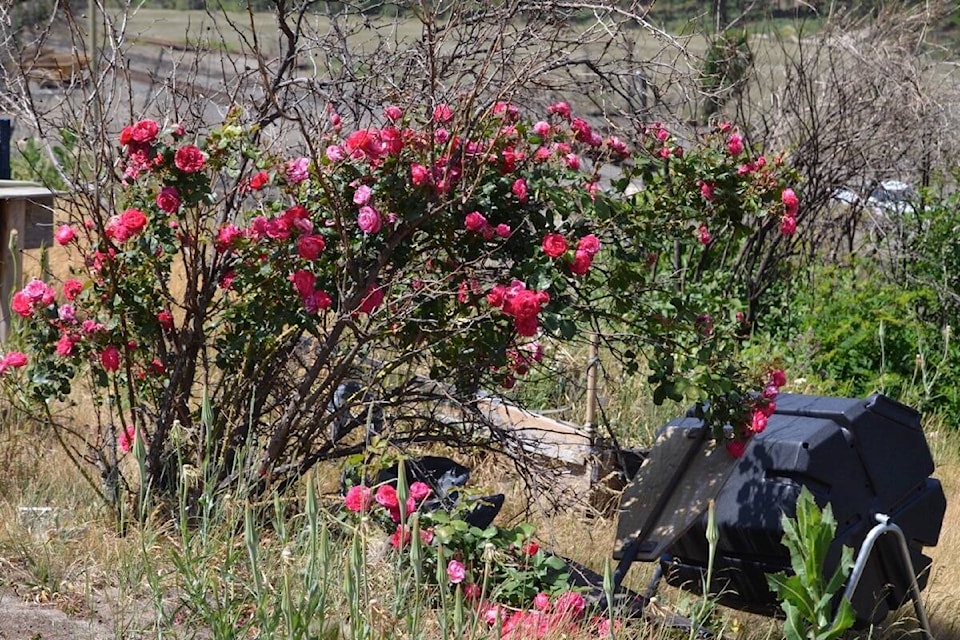There was a small measure of happiness in Lytton on June 24, when news came down that visitors to the downtown core no longer need to wear N95 masks.
Lytton — which bills itself as “Canada’s Hot Spot” — made news around the world on June 30, 2021 as it registered the highest temperature ever recorded in Canada: 49.6 C. The next day, 90 per cent of it burned to the ground, destroyed in a fire, the cause of which is still undetermined.
Ever since then, anyone visiting the site on foot has to wear full protective gear: steel-toed boots, a helmet, a high-vis vest, and (until June 24) a N95 mask. The removal of the mask requirement — especially with the hot weather kicking into full gear — is a piece of good news in a place where good news is a rare commodity.
Denise O’Connor, a former school principal who has spent most of her life in Lytton, is happy.
“It’s unbelievable to hear that!”
She visited the site office, an Atco trailer just below Kumsheen ShchEma-Meet School, to meet with Black Press Media. She stood patiently as construction safety officer Marc Silverman sifted through the three pages of information and a waiver that all visitors must understand and sign.
She can count the number of times she has listened to the talk, mostly escorting journalists to the site. Sometimes they ask for a visit, and sometimes she offers to take them; with the passage of time since the fire she can’t keep track.
“I’ve done it a lot,” she said. “I’m kind of numb to the current visuals in the village, and I forget about the impact on people who haven’t seen it before.”
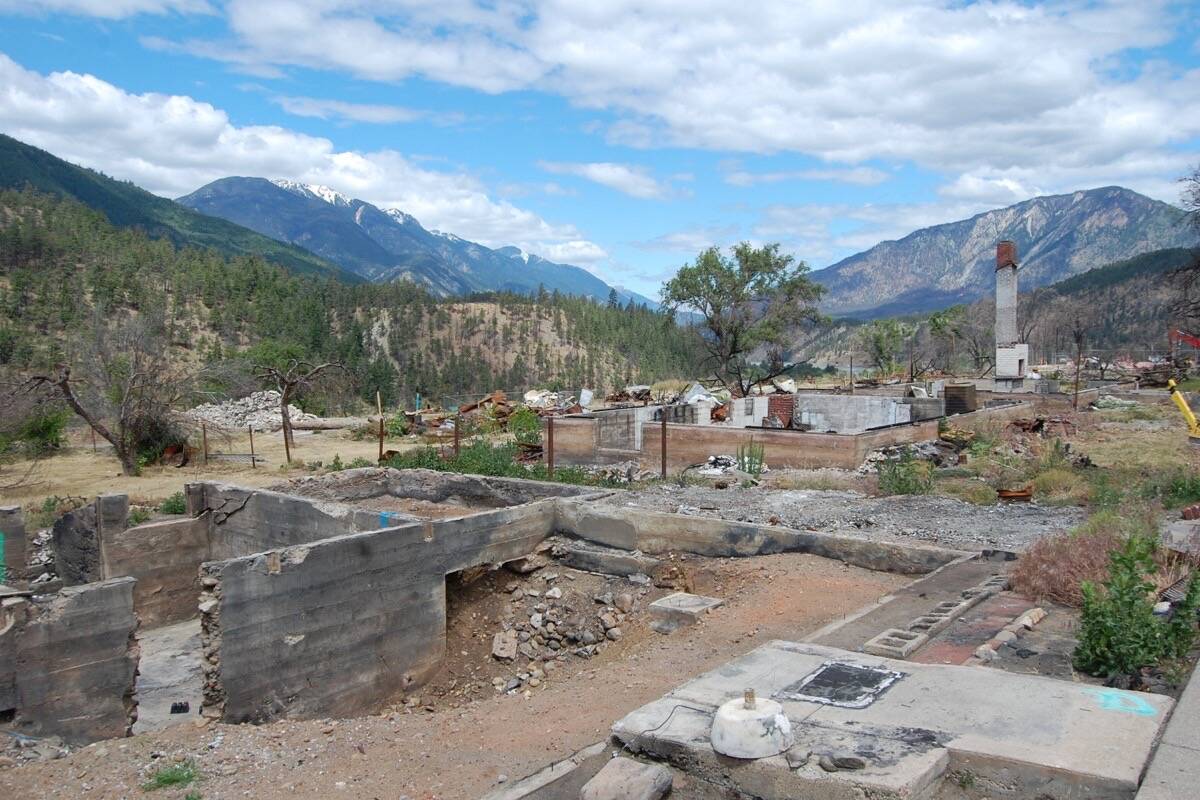
Before June 30, 2021, the village contained businesses, a health centre, an RCMP detachment, a post office, a bank, hotels, a library and municipal office, churches, two museums, a fire hall, a pool, dozens of houses and more – all the things that make a town a community.
Today, from Highway 1 above town it remains difficult to see the destruction: black fencing along the west side of the highway prevents it. The access road at the north end of town is blocked off, but people travelling through Lytton to Highway 12 and points beyond can turn off by Kumsheen School and travel down Main Street, through the heart of the village, where bright blue fencing — a splash of colour against the brown and black and grey of most of the town — lines the street.
Two security guards in white pick-up trucks are at either end of Main Street, 24/7. They have a clear view of the entire route, so if anyone travelling through stops their vehicle, gets out, or even slows down, security is there to usher them on their way.
Black Press Media has not been to Lytton since July 9, 2021. Since then, dozens and dozens of burnt-out vehicles — cars, trucks, campers, RVs — have been removed, along with most of the chimneys, all that were left standing on many properties. Apart from that and the fencing, the site looks much as it did almost a year ago, with one major exception: several sites have now been cleared of debris, rubble and foundations.
These, explained O’Connor, are mostly properties of those with no insurance. The province stepped in several months ago, saying it would cover the cost of debris removal for the uninsured and the under-insured, but O’Connor said that led to considerable confusion.
“The province told us they’d always said they’d pay for under-insured people, but the messages we got were mixed. At one press conference, they’d say uninsured, and at the next, they’d talk about under-insured.”
The truth, as O’Connor and others with insurance have found, is that almost everyone is under-insured, given that the cost for clean-up is higher than most policy limits.
Archaeological work — which must be carried out at every property and overseen by trained workers, who watch as every load of dirt is removed — is not covered in insurance policies. Policyholders and their companies needed confirmation that the cost would be covered by the province.
O’Connor is frustrated that some people have blamed insured property owners for slowing down the pace of debris removal.
“We’ve been told it’s our fault for not signing, but we’ve been waiting for the insurance companies to get it in writing before signing the right of entry form,” she said. “That signs everything over to the village to clean up the property, and means that if anything happens we won’t blame them. They won’t start the insured clean-up until they get all the right of entry forms.”
We stopped at O’Dwyer Park on Fraser Street, at the plaque marking Lytton as Canada’s Hot Spot. The park was untouched by fire, and still contains the stone memorial, reading “In memory of Jim O’Dwyer for outstanding and dedicated service to the community of Lytton and Lionism. Deceased Sept. 15, 1978.”
The O’Dwyer house was at 525 Fraser St., and was the house O’Connor lived in until June 30 last year. The site is now like many others in town, reduced to a foundation surrounded by the charred remnants of everyday life. O’Connor, who is currently living in the family home where she grew up, which is above town and didn’t burn, said she plans to rebuild the O’Dwyer house.
Only it won’t be the O’Dwyer house anymore, she acknowledged. As in many small towns, where homes are still referred to by the names of someone who built it, or had lived there long ago, the O’Dwyer house, like so many others, is gone. It can be rebuilt but much of the history is lost.
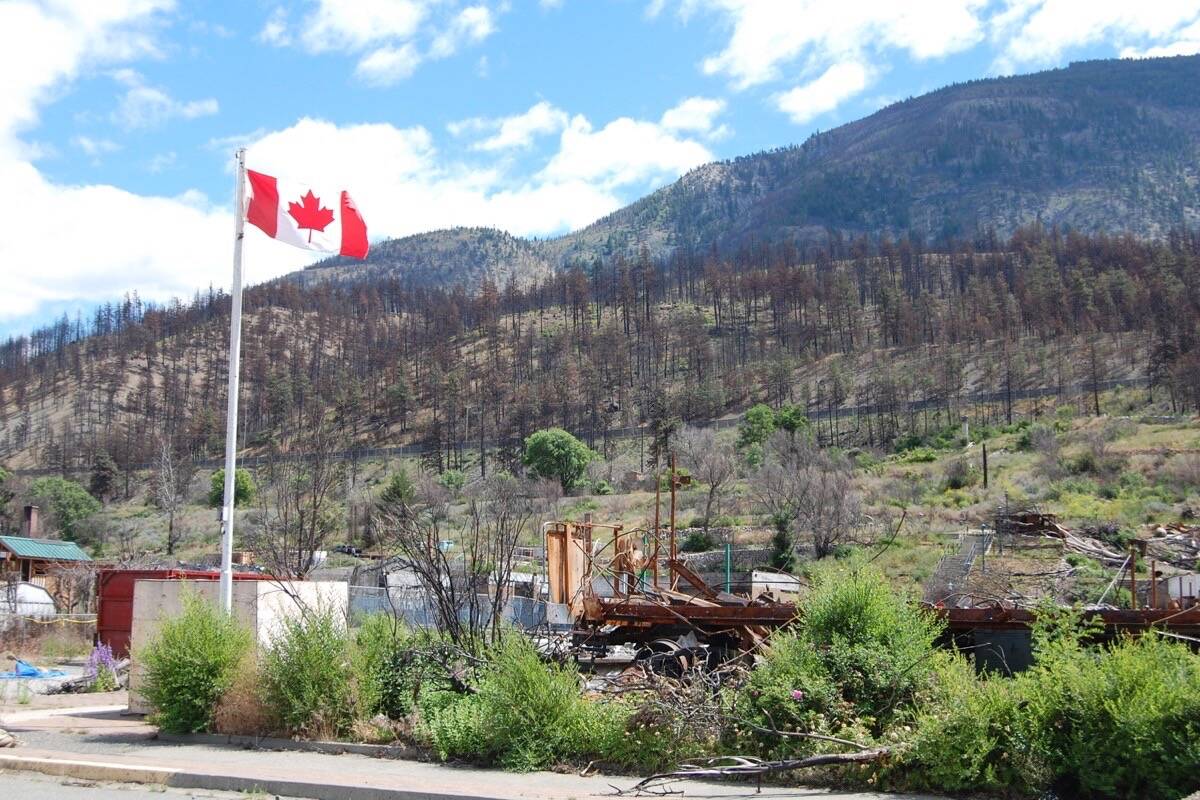
A few lots down on Fraser is the site of what was the Lytton Museum. It is now an empty lot, eerily smooth amidst the rubble. Several sites owned by the Village of Lytton, such as the museum and nearby fire hall, were among the first lots where debris was removed. The municipal building on 4th Street is untouched, but burnt-out chair frames are piled where a wall once stood.
Beside the museum site is the Lytton pool. The infrastructure around it was destroyed, including the visitor centre on Fraser. The pool itself, painted blue, had stood out in aerial photographs taken of Lytton post-fire, but on June 24 it was being jack-hammered out of existence.
Further down Fraser is the site of the Totem Motel, the oldest building in Lytton. As an uninsured building, the lot has been cleared, but O’Connor said the owners have no plans to rebuild. Across Fraser Street is the site of the Lytton Legion, painstakingly refurbished by volunteers over the last few years. That building was insured. The Legion has boxed up the cenotaph and put up a new flag, which flutters brightly, bravely in the stiff breeze.
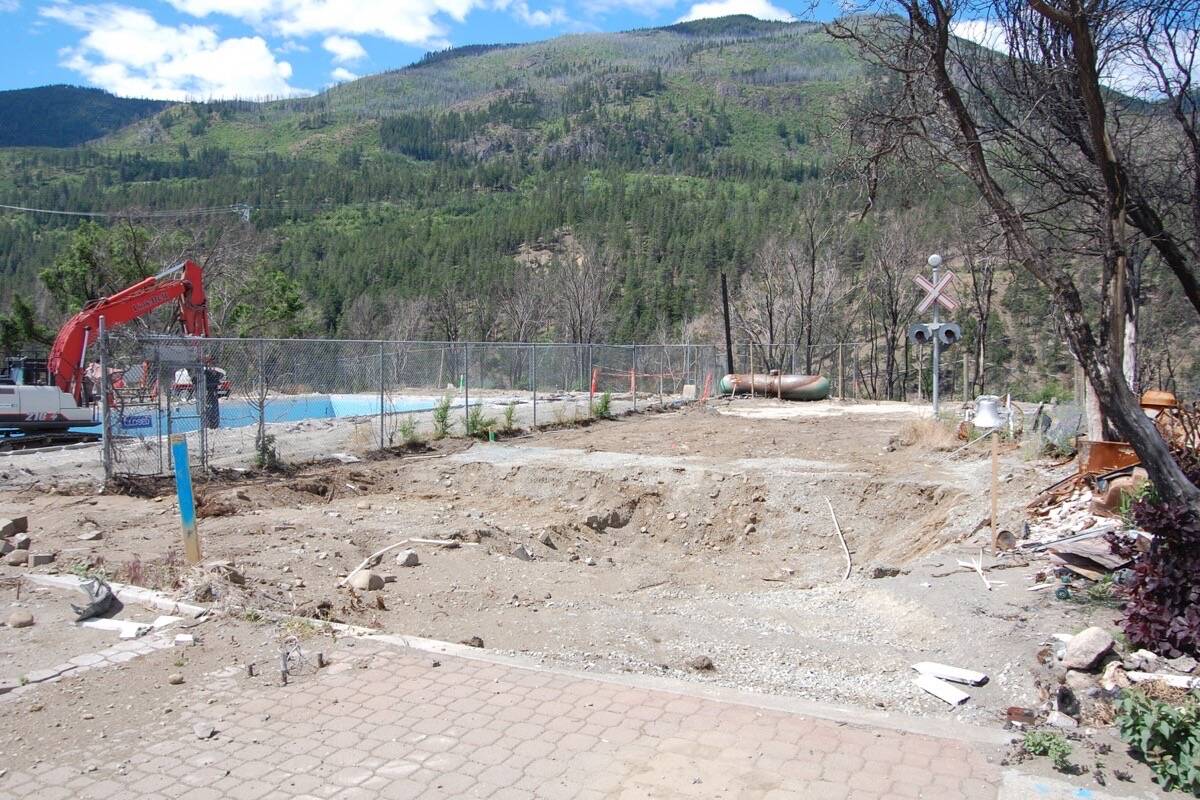
The properties at the south end of Fraser Street have all been cleared, including the site of the house belonging to former Lytton public works employee Owen Collings. He is now a site manager on the recovery team, and it was he who recommended that those sites be cleared before freshet so people travelling past them on River Drive would not see the debris.
River Drive leads past the sewage treatment plant to a place called Hobo Hollow: a large parking lot at the east side of the CN rail bridge and the pedestrian bridge beside it leading from the west side of the Fraser River. Westside is not part of the Village of Lytton, but many people live there. They will park their cars on the west side, walk across the bridge, and use another car they keep parked on the east side to go into town and beyond.
Hobo Hollow is full of cars, as well as village-owned items — benches, stone planters, garbage cans with plastic inserts — recovered from the town above. Some were damaged beyond repair, while others looked fresh and clean, ready to go back on the sidewalks, whenever they are rebuilt.
Hobo Hollow is a key travel link, especially in spring, when freshet means the Lytton reaction ferry cannot operate, leaving the pedestrian bridge as the only way to get from Westside to Lytton itself. Youth employed by Lytton First Nation wait in the parking lot, and when laden-down shoppers return to Hobo Hollow their goods are loaded into wagons and pulled by the youth across the bridge. Collings knew that there would be a lot more vehicles travelling along River Drive when the ferry went out.
“The ferry can be out for weeks, depending on the run-off,” said O’Connor. “It’s a real positive to have Owen because he knows a lot about the village.”
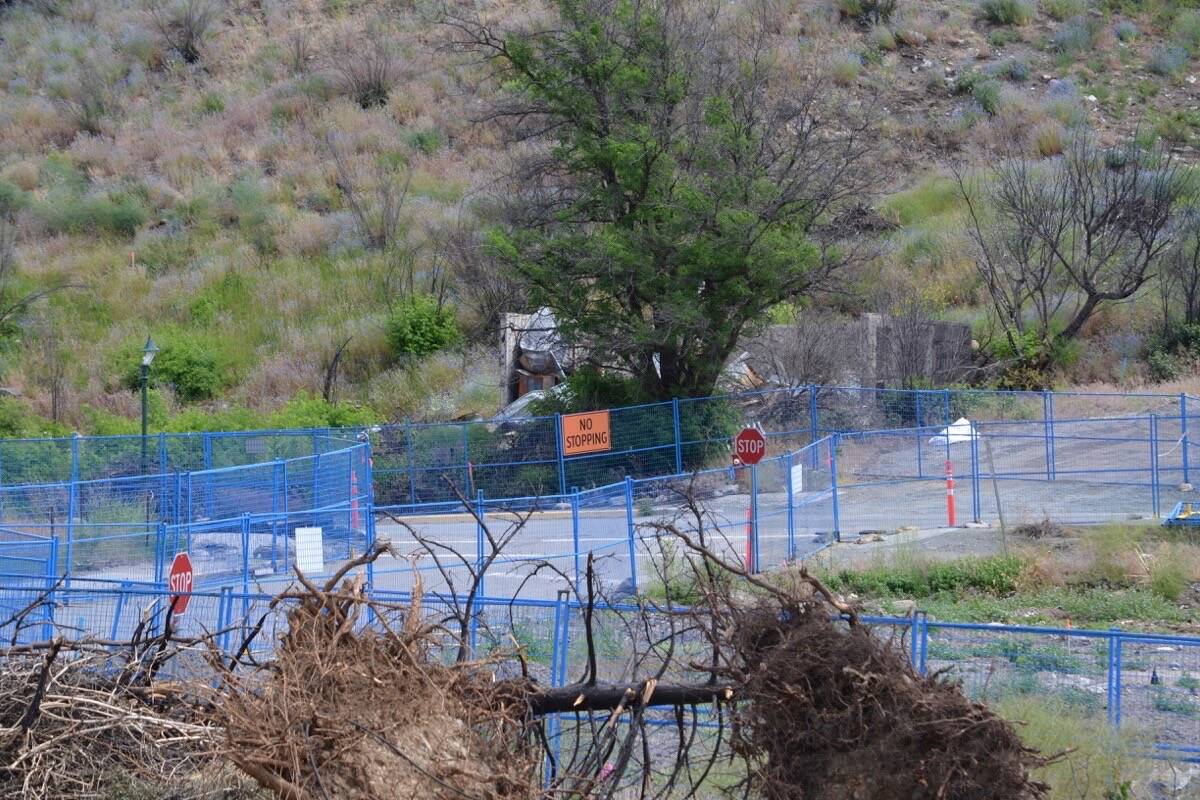
Collings was at the Two Rivers Market later that afternoon, he and his wife Patsy Gessey the only vendors left late in the day. The Lytton farmers’ market had been voted best small market in B.C. in 2016. It has now reopened at Gwsep Gas on Highway 12 just outside town.
O’Connor picked up garlic scapes, beets, and kale from Collings and Gessey. Fresh fruit and vegetables are hard to come by in Lytton now. So is everything else, but O’Connor misses fresh vegetables.
She noted while the Village of Lytton only had a population of around 260 people, more than 2,000 people live in the surrounding area, in Thompson-Nicola Regional District Area “I,” on First Nations reserves, and in unincorporated communities.
“The Village of Lytton was a service community for so many people, not just from the village and from Lytton First Nation but from Skuppah, Siska, Kanaka Bar,” explained O’Connor. “At Christmas, we put together nearly 500 food hampers for area residents. We had all the services in Lytton, and people came here from Spences Bridge and Boston Bar for banking and groceries and health care.”
Banking is now in a Scotiabank trailer at Kumsheen Rafting Resort north of town (no cash deposits allowed). A tiny Canada Post trailer at Gwsep Gas allows people to receive packages and mail items but only if they have the correct postage as they can’t buy stamps. Amazon does not currently deliver to Lytton, but plans are apparently in the works to change this.
Lytton and area residents have been hearing for a year about plans that are “in the works.”
The RCMP was going to set up a mobile detachment late in 2021 but now it might be late fall 2022. A bigger post office facility was promised. Temporary housing was to be constructed for village residents but nothing has been built. People in the village had been told that rebuilding might start as soon as fall 2022 - most people have now quietly moved that date back to at least spring 2023.
Don’t tell that to Lytton First Nation, however. O’Connor drove us past IR 17 and IR 18, LFN land where clearing work has been completed. Further out of town, along Highway 12, we turned down Two Mile Road and then St. George’s Road, where various grasslands have been cleared and dozens of new modular homes erected for LFN members. At the west end of the site, a new road was being carved up a hillside to join Highway 12, to provide easier access.
First Nations have their own autonomy and operate outside municipal and provincial legislation, so LFN has been able to move forward quickly, assisted by funding from the federal government.
In Lytton, by contrast, funding has trickled in: $1 million in 2021 to help the village keep operating; $8.3 million in February for debris removal, environmental and archaeological remediation, and to support the local government; another $18.4 million in March for more debris removal and remediation; $77 million in June to fund fire-resilient building costs and a Lytton Business Restart program.
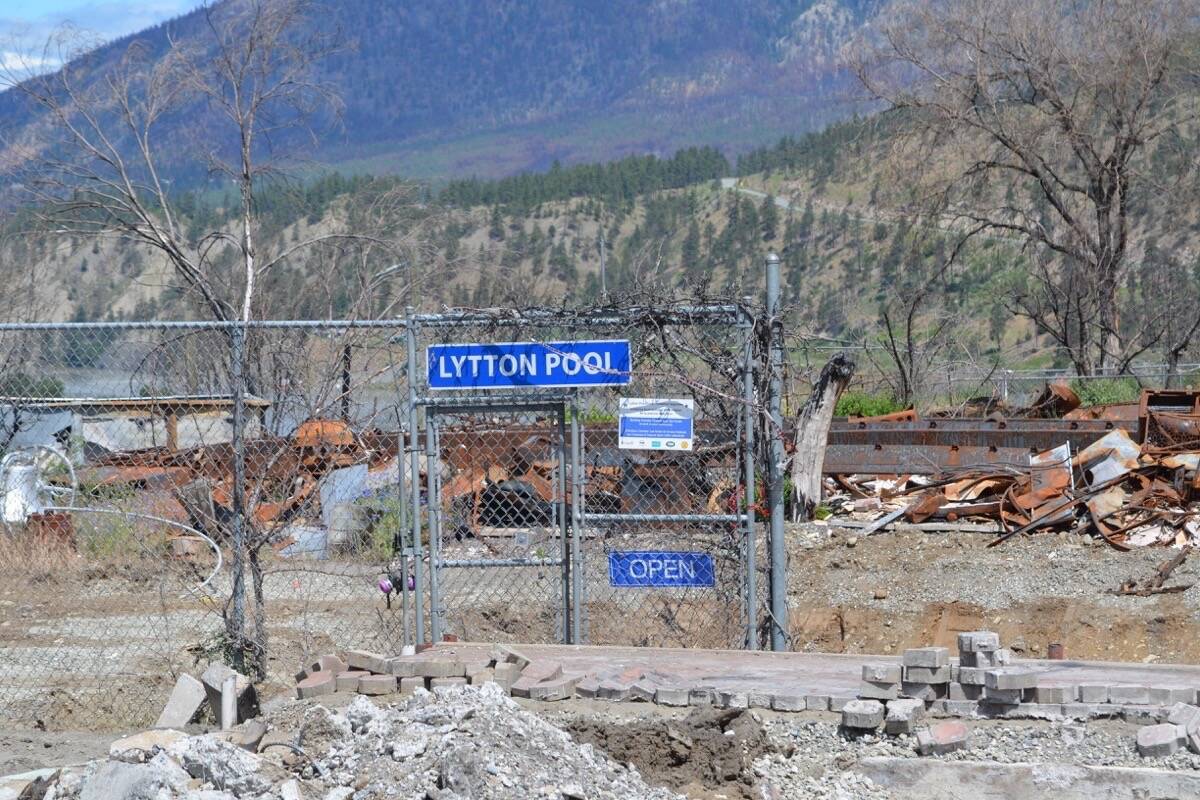
It’s a lot of money from the provincial and federal governments, but no one knows how much is needed. Questions remain about supply chain issues, the costs of rebuilding and what businesses will return and those that won’t.
O’Connor was pragmatic about the fact that the one-year mark attracted an unusually high amount of attention.
“It keeps it in the public eye. If I don’t see Lytton in the news for a month or so, or see something about how ‘Lytton is rebuilding,’ I’ll get some kind of story out because otherwise, people will think Lytton is moving ahead great guns.
“Our story has to stay out there, or we’ll be forgotten.”
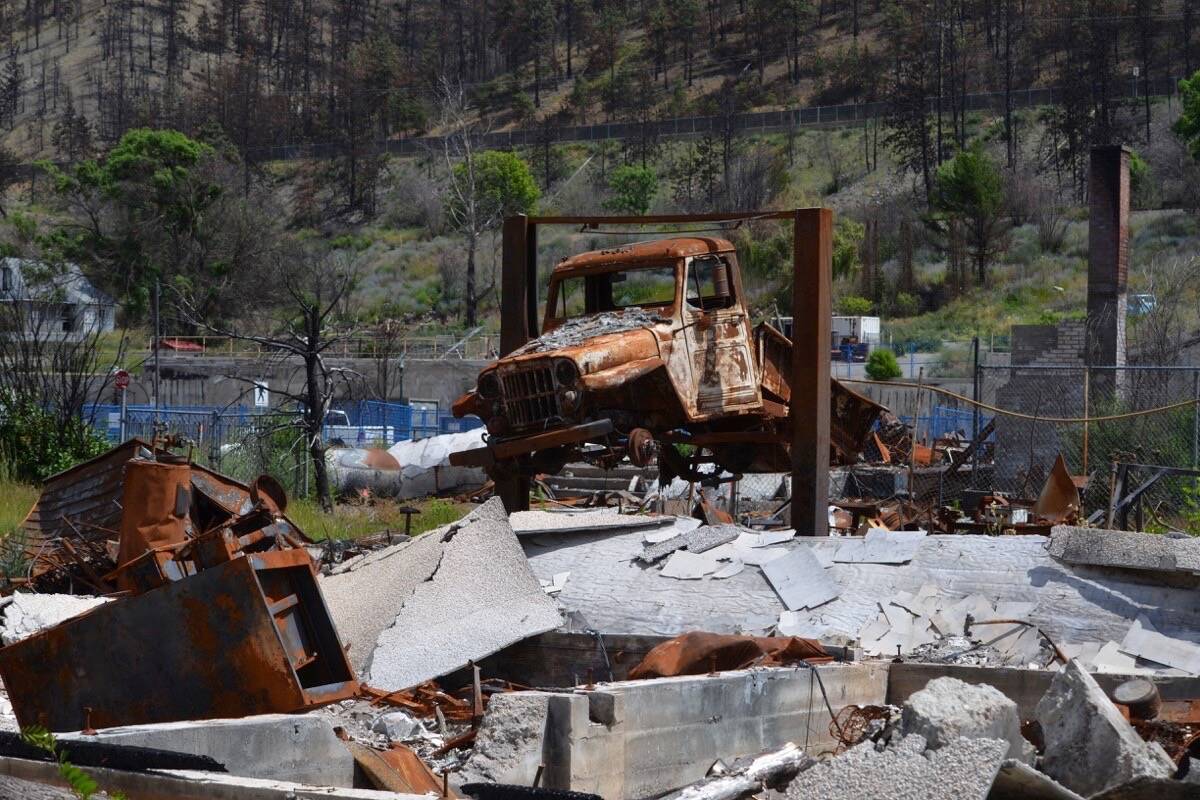
editorial@accjournal.ca
Like us on and follow us on
